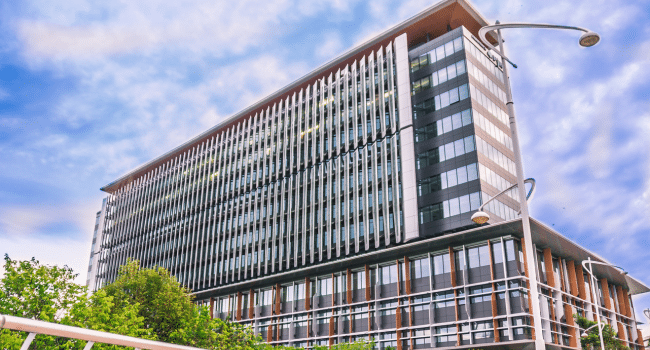Table of Contents
Introduction to Korean Office Infrastructure
South Korea’s corporate landscape is characterized by its technologically advanced, highly efficient offices that reflect the nation’s rapid economic development and innovative spirit.
From the towering skyscrapers of Seoul’s Gangnam business district to the modern corporate centers in Busan’s Marine City, Korean offices incorporate cutting-edge design, smart technology, and employee-centric facilities that set global standards for workplace environments.
This comprehensive examination will explore the various facility types, their technological integrations, maintenance standards, and emerging trends in Korea’s corporate buildings.
The analysis draws upon data from the Korea Appraisal Board, the Ministry of Land, Infrastructure and Transport, and surveys of major business districts across the nation.
Core Facility Categories in Korean Offices
1. Vertical Transportation Systems
Korean offices feature sophisticated elevator systems that typically account for 8-12% of the total construction cost. Modern installations include:
Destination Dispatch Systems: AI-powered elevators that group passengers by destination floors (implemented in 68% of Grade A buildings)
Double-Decker Elevators: Increasingly common in buildings over 50 stories (35% adoption rate in new constructions)
Emergency Elevators: Compliance with strict fire safety codes (100% of buildings over 10 floors)
Smart Maintenance: IoT-enabled predictive maintenance systems (42% penetration in Seoul CBD)
The average waiting time in premium 대구 오피 has decreased to 28 seconds through these technological implementations, according to 2023 KAB benchmarks.
2. HVAC and Environmental Control
Korean offices employ advanced climate control systems that must accommodate both the country’s humid summers and cold winters:
VRF (Variable Refrigerant Flow) Systems: 89% adoption in buildings constructed post-2015
Underfloor Air Distribution (UFAD): Growing in popularity (17% annual growth rate)
CO₂ Monitoring: Mandatory in all buildings over 3,000㎡ since 2022
Particle Filtration: HEPA filters now standard in 76% of premium buildings
Energy efficiency ratings show that newer buildings consume 35-40% less energy per square meter than those built before 2010, with several achieving LEED Platinum or WELL certifications.
3. Electrical and Power Infrastructure
The electrical systems in Korean offices demonstrate remarkable reliability:
Dual Power Feeds: 92% of Grade A buildings feature redundant power sources
Emergency Generators: Capable of supporting critical loads for 72+ hours
Smart Metering: Real-time energy monitoring in 64% of over 20,000㎡
EV Charging Stations: Average of 1 station per 50 parking spaces (national mandate by 2025)
Power density has increased to 150-200W/㎡ in tech company to accommodate high-performance computing needs.
4. Sanitation and Water Systems
Korean standards for water and sanitation exceed many global benchmarks:
Water Recycling: 58% of large have greywater systems
Touchless Fixtures: 94% adoption rate in post-pandemic renovations
Drinking Water Stations: Average of 1 per 1,500㎡ office space
Advanced Drainage: Anti-odor systems in 83% of premium
Water consumption metrics show a 28% reduction since 2015 due to these conservation measures.
